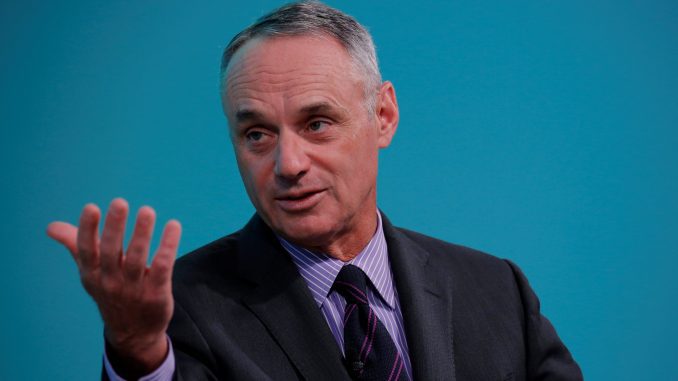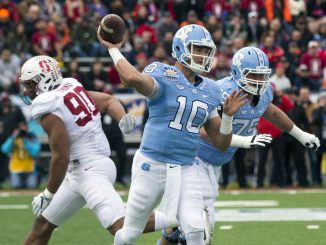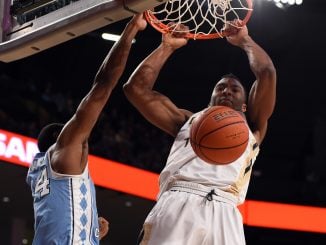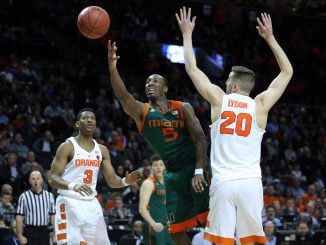
Major League Baseball is planning aggressive changes to speed up the game and will test these changes during the minor leagues and in spring training according to multiple reports.These rule changes involve changing the strike zone, changing the approach to intentional walks and implementing a radical extra-inning approach.According to a report from Yahoo! Sports, MLB plans on testing an extra-inning rule-change proposal in the lower minor leagues this season that will call for a runner to automatically be placed on second base to begin extra innings.That would be a major departure from baseball tradition, although sources told Yahoo Sports, the proposal has considerable support.International baseball has used a similar rule for nearly a decade, and it will be used in the World Baseball Classic this spring. A similar rule is used in women’s collegiate softball.Major League Baseball plans to test the rule in rookie-level Gulf Coast League and Arizona League this summer. Those games will be monitored to determined what impact the rule has on the game and whether it would make sense to implement it at the major league level.”Let’s see what it looks like,” said Joe Torre, MLB’s Chief Baseball Officer, told Yahoo Sports. “It’s not fun to watch when you go through your whole pitching staff and wind up bringing a utility infielder in to pitch. As much as it’s nice to talk about being at an 18-inning game, it takes time.”It’s baseball. I’m just trying to get back to that, where this is the game that people come to watch. It doesn’t mean you’re going to score. You’re just trying to play baseball.”Details of the rule have not been finalized, but it apparently will go into effect in the 10th inning of a game. In that inning, and any subsequent innings, a runner would be placed on second base before the first batter of the inning comes to the plate.It is an attempt to create a more exciting game by increasing the action and creating more options for the team at bat. The most obvious strategic issue would be whether the first batter of the inning should try to bunt the runner to third.”What really initiated it is sitting in the dugout in the 15th inning and realizing everybody is going to the plate trying to hit a home run and everyone is trying to end the game themselves,” Torre said. “I don’t know what inning is the right inning. Maybe the 11th or 12th inning. But there are a number of reasons.”Even if the testing in the minors is deemed a success, it would probably take several years for such a radical change to be used in the majors.MLB is also working with the Major League Baseball Players Association to make changes to the strike zone and intentional walk procedures according to a report from ESPN.The league is proposing to raise the lower part of the strike zone to the top of the hitter’s knees, effectively raising the zone by an estimated 2 inches, according to the report. Since 1996, the bottom of the strike zone has been defined as “the hollow beneath the kneecap.”The change in the rule for intentional walks rule would end the long-standing practice of requiring the pitcher to toss four soft pitches outside the strike zone. MLB is proposing a team instead could just signify it wants to issue an intentional walk and the hitter would be sent directly to first base, ESPN reported.The league presented the two proposals to the union in late January after they were agreed to by both its competition committee and playing-rules committee, according to ESPN.The intentional-walk proposal is part of MLB’s attempts to speed up the game.”We did review some rule changes largely related to pace of game that are being discussed with the players’ association,” MLB commissioner Rob Manfred said during two days of owners meetings that concluded Friday in Palm Beach, Fla.Manfred has pushed for faster games since he became commissioner more than two years ago.The average time of a nine-inning game last season was 3 hours, a 4-minute increase over 2015. One playoff game took more than 4 1/2 hours.”Pace of play is an issue that ‘we’ need to be focused on,” Manfred said last week. “The ‘we’ there is players, owners, umpires, everyone who is invested in this game. I don’t think there’s a magic bullet that is going to come one year to be the solution to pace of play. It’s going to be an ongoing effort to make sure our game moves along in a way that is most attractive to our fans.”



